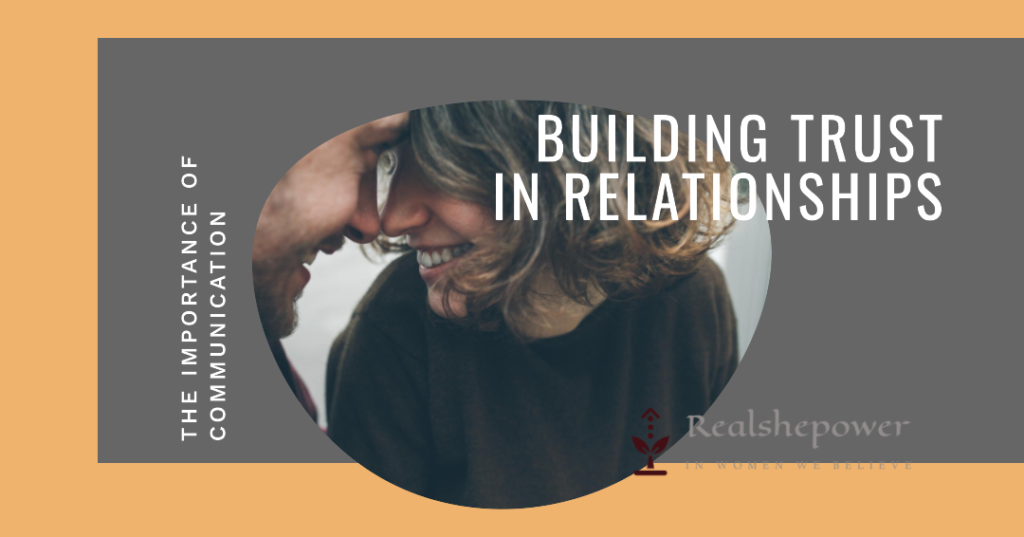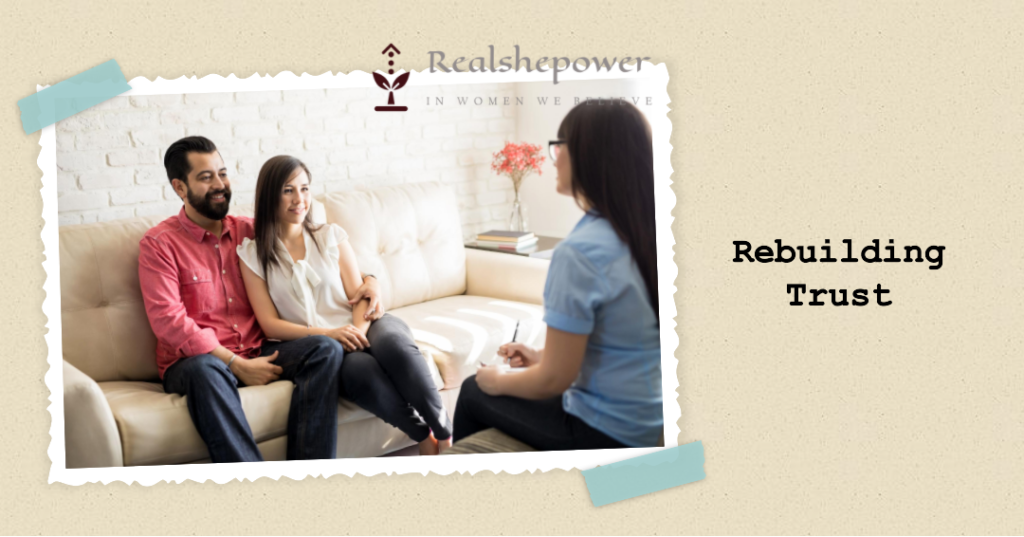The Role of Trust: The Pillar of Relationships – Building, Maintaining, and Repairing Trust


Trust is often referred to as the bedrock of any relationship, whether personal or professional. It is a crucial component that facilitates communication, establishes security, and fosters emotional connectivity. In essence, trust is the bond that holds a relationship together through stormy weather and calm seas. However, building, maintaining, and repairing trust within a relationship is an ongoing process that demands patience, understanding, and consistent effort. This article will delve into the profound role of trust in relationships, offering insights into how to establish, sustain, and mend trust when it is broken.
Table of Contents
Understanding the Role of Trust
At its core, trust is about reliability and faith. It’s about believing that the other person will act in our best interests, protect our vulnerabilities, and respect the commitments they make to us. Trust essentially gives us the courage to be ourselves and to be open and vulnerable. It allows us to express our thoughts and emotions without the fear of being judged, ridiculed, or exploited.
In a trusting relationship, individuals feel secure, comfortable expressing their feelings, and confident that their partner will respect and honor their needs. This emotional safety net that trust creates is the foundation upon which intimacy, understanding, and love are built.
Building Trust in a Relationship
Trust is not given; it’s earned. Building trust is akin to constructing a tower, one brick at a time, with each brick representing the actions and behaviors that demonstrate reliability, honesty, and vulnerability. It is a gradual and complex process that can’t be rushed. Here, we delve deeper into how trust can be established in a relationship.
1. Honesty: Honesty is the keystone in the arch of trust. This involves being open and truthful about your thoughts, feelings, and actions. Whether it’s sharing about your day, expressing your feelings, or admitting to a mistake, honesty is critical. An honest conversation, even if difficult, can lead to a deeper understanding and a stronger bond. Being truthful might be uncomfortable at times, but it’s far better than the other person discovering deception. Remember, a single lie can damage trust, and regaining it is far harder than establishing it.
2. Consistency: Consistency of actions is another significant aspect of building trust. When your actions consistently align with your words, it provides a sense of reliability. Consistency is about showing up, following through, and being there for the other person, demonstrating that they can depend on you. Whether it’s sticking to plans, meeting deadlines, or following through on promises, consistency is what builds the edifice of trust over time.
3. Empathy: Empathy is the ability to understand and share the feelings of another person. It’s about stepping into their shoes and seeing the world from their perspective. By acknowledging the other person’s feelings and experiences, you demonstrate that you value them, which strengthens the bond of trust. Empathetic listening, where you listen to understand and not to respond, can be an effective tool in building trust.
4. Reliability: Trust grows when the other person knows they can count on you. This includes being there for them in times of need, keeping your promises, and maintaining confidences. Being reliable might mean different things in different relationships – for some, it could mean emotional availability, for others, it could be about fulfilling responsibilities. Find out what reliability means in your relationship and strive to meet those expectations.
5. Open Communication: Open and transparent communication helps prevent misunderstandings and unspoken assumptions that can erode trust. It involves expressing your thoughts, feelings, and concerns honestly, and also being a good listener when the other person is communicating. An environment where both individuals feel heard, understood, and valued fosters trust.
6. Vulnerability: Trust grows in an environment of vulnerability. Vulnerability involves opening up, sharing your fears, mistakes, and insecurities, and letting the other person see your authentic self. It is a leap of faith that signals to the other person that you trust them, encouraging them to reciprocate.
7. Patience: Building trust takes time. It’s a journey filled with small steps, each one cementing the trust a little more. Be patient with yourself and the other person. Give them time to prove their reliability, and give yourself time to grow into a trustworthy person.
Maintaining Trust in a Relationship

Maintaining trust in a relationship is a continuous journey, a commitment to preserving the secure foundation upon which the partnership is built. Once trust is established, it must be nurtured and fortified continually to withstand the inevitable trials that come with shared life experiences. Here’s how you can effectively maintain trust in your relationship.
1. Continued Honesty: Honesty must not be a temporary effort only used during the trust-building phase. It needs to be a lifetime commitment. Being truthful in all circumstances is vital. Even if the truth might lead to discomfort or disagreements, in the long run, it always proves beneficial for the relationship. Remember that lies, even small ones, can create cracks in trust that are hard to repair. Honesty cultivates an environment of openness that enhances trust.
2. Reinforcing Reliability: Show your partner that they can count on you by honoring your commitments, whether big or small. This could range from doing your share of household chores to being there for them in times of need. It’s essential to follow through on your words with actions consistently, demonstrating that you are reliable and trustworthy.
3. Frequent Communication: Open and transparent communication is an underpinning factor in maintaining trust. This involves regularly expressing your feelings, discussing your fears and expectations, and addressing any concerns or misunderstandings promptly. It’s also about active listening and giving your partner the space to express themselves freely. Regular ‘check-ins’ with each other can be a great way to ensure open lines of communication and address any issues before they escalate.
4. Respect Boundaries: Understanding and respecting each other’s personal boundaries is key to maintaining trust. Each individual has unique needs and limits regarding personal space, time, social interactions, and other aspects. Respecting these boundaries shows that you value their individuality and personal needs, reinforcing the bond of trust.
5. Forgiveness: In every relationship, mistakes are bound to occur. Holding on to resentment or anger can erode trust over time. Therefore, cultivating a forgiving attitude is vital. This doesn’t mean condoning hurtful actions but rather choosing to forgive, learn, grow, and move forward together from those incidents. It’s about giving your partner the opportunity to make amends and not using their past mistakes as ammunition in future disagreements.
6. Trust-Building Activities: Engaging in activities that foster trust can also be beneficial. These could be as simple as sharing personal stories and experiences, setting and achieving goals together, or even trust-building exercises such as tandem skydiving or trust falls. These shared experiences can reinforce trust and create stronger bonds.
7. Promote Independence: Trusting a partner also involves trusting their choices, decisions, and their ability to handle situations independently. Over-dependence can sometimes lead to distrust and unnecessary conflict. Encourage and support each other’s individual interests and pursuits.
8. Empathy and Understanding: Empathizing with your partner involves understanding their perspective, sharing in their emotions, and offering comfort and support during difficult times. This emotional connection deepens trust and creates a supportive and understanding relationship environment.
Maintaining trust is a dynamic, ongoing process. It demands commitment, patience, and consistent efforts from all parties involved. However, the result—a relationship anchored in mutual trust—is worth every ounce of the effort invested.
Repairing Trust in a Relationship

There may be instances when, despite the best intentions, trust within a relationship is damaged or broken. It’s essential to recognize that even when trust is fractured, it’s not an automatic death sentence for the relationship. With dedicated effort, patience, and sincere intent, trust can be repaired, and the relationship can be steered back on track. Here are some in-depth steps on how to mend broken trust:
- Acknowledge the Breach: Trust cannot be repaired unless the breach is acknowledged openly by both parties. Denying the issue or neglecting it will only serve to further erode trust. The person responsible for the breach should accept their mistake and understand its impact on the other person. The wronged party, on the other hand, should express their feelings of hurt and betrayal without resorting to blaming or shaming.
- Apologize Sincerely: Once the breach is recognized, a sincere apology is in order. The person at fault should genuinely express their remorse for their actions. The apology should not just be about the act, but more importantly, about the pain it caused the other party. A half-hearted or forced apology can often do more harm than good. Remember, an effective apology is one that not just articulates regret but also demonstrates an understanding of the impact of the breach of trust.
- Make Amends: Apologies, while necessary, are not sufficient in themselves to repair broken trust. Apologies must be followed by concrete actions that rectify the wrong and demonstrate a commitment to change. Depending on the situation, making amends could mean different things. For instance, if trust was broken due to dishonesty, then being consistently honest in all interactions can help mend the breach. If trust was compromised due to neglect or lack of attention, then demonstrating love, care, and attention can help heal the wound.
- Give it Time: Healing is a process, and it takes time. When trust is broken, the wounds can be deep, and it may take considerable time for them to heal. It’s important for both parties to be patient with each other during this time. The person responsible for the breach should understand that rebuilding trust doesn’t happen overnight and that their partner may need time to heal and forgive. The person wronged should also recognize that rebuilding trust is a process and that it may take time for their partner to change their behavior and prove their reliability.
- Seek Professional Help: In some cases, the breach of trust might be so severe or complex that professional help, like a counselor or a relationship therapist, might be needed. A professional can provide a safe, neutral space where both parties can express their feelings, fears, and hopes. They can guide the conversation in a way that is productive and non-confrontational and offer strategies and exercises to rebuild trust.
- Rebuild Communication: Communication is a key element in repairing trust. Honest, open, and frequent communication can prevent misunderstandings and help both parties understand each other better. The person who breached the trust should be open about their actions and motivations and make a conscious effort to keep their partner informed about their actions. The person wronged should communicate their expectations clearly and express their feelings and fears honestly.
- Show Consistency: Consistency in behavior is a powerful tool in rebuilding trust. It’s not enough to apologize, make amends, or promise to change. The person at fault should show through their consistent actions over time that they are trustworthy. Consistent behavior helps to predict future actions and can thus help rebuild trust.
Trust, once broken, may not be restored to its original state quickly, but that doesn’t mean the relationship is beyond repair. The process of repairing trust requires commitment, patience, and a lot of work from both parties. However, the resulting bond, often stronger and deeper than before, can make the entire effort worthwhile.
Frequently Asked Questions about Trust in Relationships
How can I build trust in a new relationship?
Building trust in a new relationship involves open and honest communication, consistency in actions, empathy, and reliability. It requires time and patience.
Can a relationship survive without trust?
Trust is a fundamental element of any relationship. A relationship without trust will lack emotional security, open communication, and mutual respect, making its survival challenging.
Can trust be rebuilt once it is broken?
Yes, trust can be rebuilt even after it’s been broken. However, the process requires acknowledging the breach, sincere apology, making amends, and giving it time.
How can I trust again after being betrayed?
Trusting again after betrayal can be difficult and requires time, patience, and a genuine effort from both parties. Seeking professional help can be beneficial in this process.
In conclusion, trust plays an invaluable role in the fabric of relationships. It is the emotional glue that fosters security, enhances communication, and nurtures love. Building, maintaining, and repairing trust are ongoing processes that require conscious effort, sincerity, and patience. The journey might be challenging, but the resulting relationship, imbued with mutual trust, makes the journey worthwhile.
You can now write for RealShePower and be a part of the community. Share your stories and opinions with us here.

Hi my loved one! I wish to say that this post is amazing, nice written and include approximately all vital infos. I’d like to peer more posts like this.